|
|
Post by firefighter on Apr 7, 2007 22:43:08 GMT 10
|
|
|
|
Post by Don Ricardo on Apr 8, 2007 0:11:35 GMT 10
Hi Geoff,
I knew that if my information was incorrect about number plates, somebody would put us on the right track!! That's what I love about this forum - there are all sorts of people around with a lot of useful information they are willing to share. So thanks for setting us straight. I take it that you agree with the rest of the info I provided?? When did the 'G' series trailer plates start? Was I roughly right?
I take your point about the start of the 'AA' series car plates, although it did leave me a bit puzzled about my father's Chrysler. I did a bit of a google on 1930's Chryslers and have come to the conclusion that his car was in fact a 1939 model, not 1936 as I had thought, so that would explain the 'AK' rego number. Apologies to Mark for misleading him about the date of the 'AB' plate on his Don 10 footer.
My father used the Chrysler I referred to right through WWII as his work vehicle using a gas producer. At the end of the war he had to have the motor reconditioned and the car re-ducoed to repair the damage to both from the gas producer. When I remember it, the Chrysler was my father's 'spare' vehicle playing second fiddle to the Buick which was pictured in the photos of our van. We lived on a farm about 30 kms out of the city (all of our relatives thought we lived out in the sticks in those days). My father couldn't afford to be stranded if a car was out of commission, so the spare vehicle was his insurance policy. Both the Chrysler and the Buick were traded in on a 1958 Dodge Royal. Magnificent piece of sculpture/machinery, but unreliable as all get out! I'll post a picture of the Dodge with the caravan when I find it.
Thanks again for the info Geoff - all adds to the combined knowledge.
Don Ricardo
|
|
|
|
Post by cobber on Jul 23, 2007 9:06:03 GMT 10
This tow coupling was fitted to a 1950’s “Gason” caravan recently sold on eBay. Does anybody have first hand knowledge about the features of this coupling, what is the bit of wire for, what does the handle on top do   The jockey wheel arrangement is interesting too, purpose made not to be removed when traveling  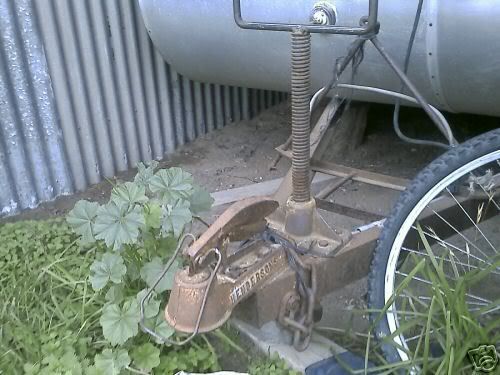 I have found the patent application for this Henderson coupling, you can see it if you click here
Cobber
|
|
|
|
Post by Geoff & Jude on Jul 23, 2007 9:52:44 GMT 10
hi cobber
i'm certainly no expert, but here's my thoughts.
you'd push down on the lever which would pivot on the bracket about half way along the lever to release the locking mechanism.
flip the wire up and the "hoops" on the short end of the wire would sit on the top of the coupling to hold the locking pin in a position that would allow you to slip the coupling over the ball.
once connected, the wire would be positioned almost as shown except so that it sits under the bottom of the coupling, which would stop the lever from operating and releasing the locking mechanism.
maybe?
geoff 'n jude
|
|
|
|
Post by chippydave01 on Aug 2, 2007 0:03:39 GMT 10
HOOK ME UP  Cheers Dave |
|
|
|
Post by Don Ricardo on Aug 12, 2007 23:26:22 GMT 10
Hi everyone, Back in March (2007) there was a bit of discussion on this thread about the Don Caravan's captive ball tow coupling and the fact that they seemed to have retained this type of coupling right through the 1934-1955 series of vans into the Don 150 series introduced in 1956. However, I indicated that as far as I could tell from a couple of photos, Don had introduced a more conventional coupling system on their Cadets (also introduced in 1956). The hypothesis regarding the Cadets appears to be confirmed by one of the photos of a Cadet (build no 2369) Mark T posted a few days ago: 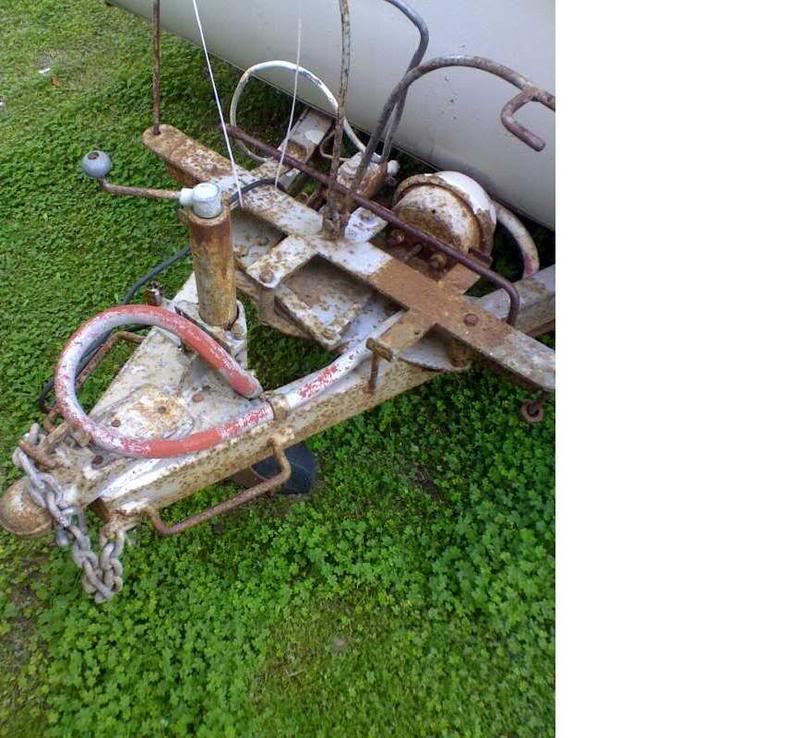 (For the full series of photos of this Cadet posted by Mark see: (For the full series of photos of this Cadet posted by Mark see:
vintagecaravans.proboards30.com/index.cgi?board=technicalstuffboard&action=display&thread=1134569477&page=3)Mark dated this Cadet as 1961. However...the question is, was the 'new' coupling used on all the Cadets (ie from 1956 onwards) or was it introduced later? The reason I ask this is: Why would Don use the captive ball system on the 150 model but then use a more conventional coupling on another model in the same year? I am also wondering about the release mechanism on the coupling of the Cadet in Mark's photo. Is the tow ball released by pulling the T-handle lever I can see, or is there some sort of knob or some other mechanism hidden by the chains? Mark can probably provide the details on this because I assume his Cadet has the same coupling...? Don Ricardo |
|
Deleted
Deleted Member
Posts: 0
|
Post by Deleted on Aug 13, 2007 0:25:06 GMT 10
Don R says: I am also wondering about the release mechanism on the coupling of the Cadet in Mark's photo. Is the tow ball released by pulling the T-handle lever I can see, or is there some sort of knob or some other mechanism hidden by the chains? Mark can probably provide the details on this because I assume his Cadet has the same coupling...?    correct Don R .....just pull the T-lever Mark |
|
|
|
Post by cobber on Sept 6, 2007 9:19:47 GMT 10
|
|
|
|
Post by cobber on Jan 10, 2008 14:38:27 GMT 10
Abernathy's coupling on what I think possibly maybe an Atlantic 'van  . Don't let anybody talk you into replacing it with some new piece of junk, if they do, can I have it ?? The plate on the off side of the draw reads, “Manufactured by JONES SPRINGS Pty Ltd 60-62 Ivy Street, Chippendale NSW. MX 2886 ph MX 1041. Patent Pending XXXXXX” (I can’t read the patent numbers)  Cobber. |
|
|
|
Post by minicamper on Jan 11, 2008 5:50:01 GMT 10
In another post I discussed the progress of restoration of my CRB Bondwood van. I can't recall who, but someone suggested that i post the hitch on here considering how unique it seems (probably just a heavy duty commercial one) I have since removed it as it was major overkill for towing behind a car, not to mention, the wrong configuration. But here it is anyway.. 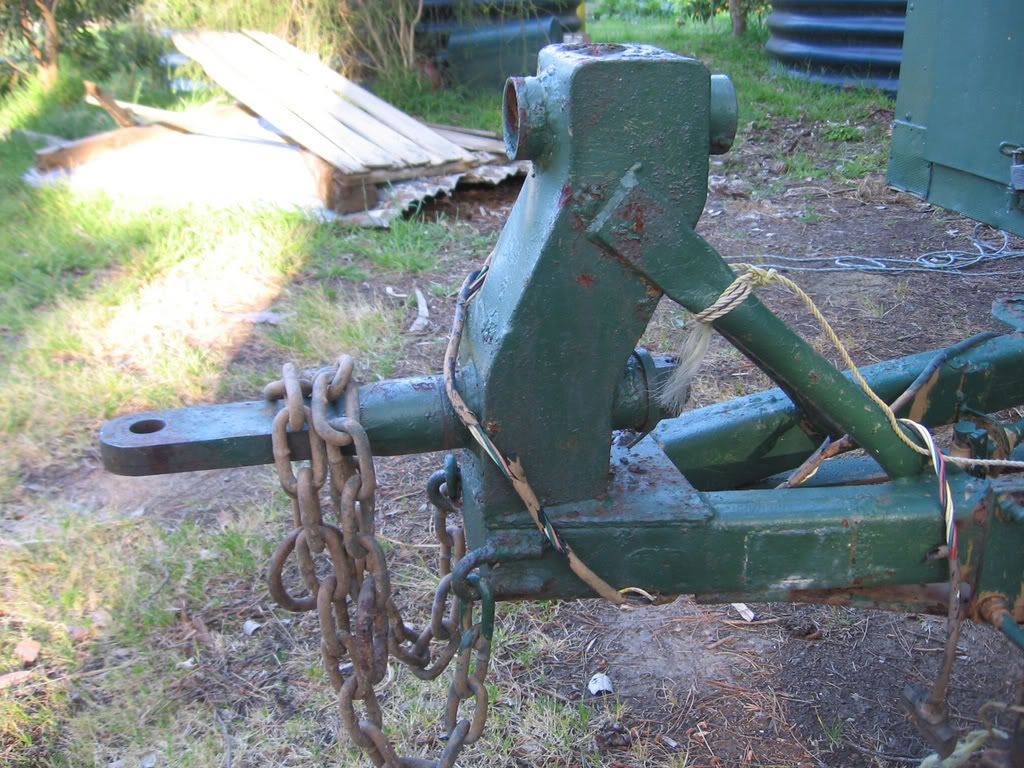 |
|
|
|
Post by earlee on Apr 13, 2008 20:10:47 GMT 10
Hey minicamper the coupling on my lantern van has the same connection as yours - maybe we can sort something out together? 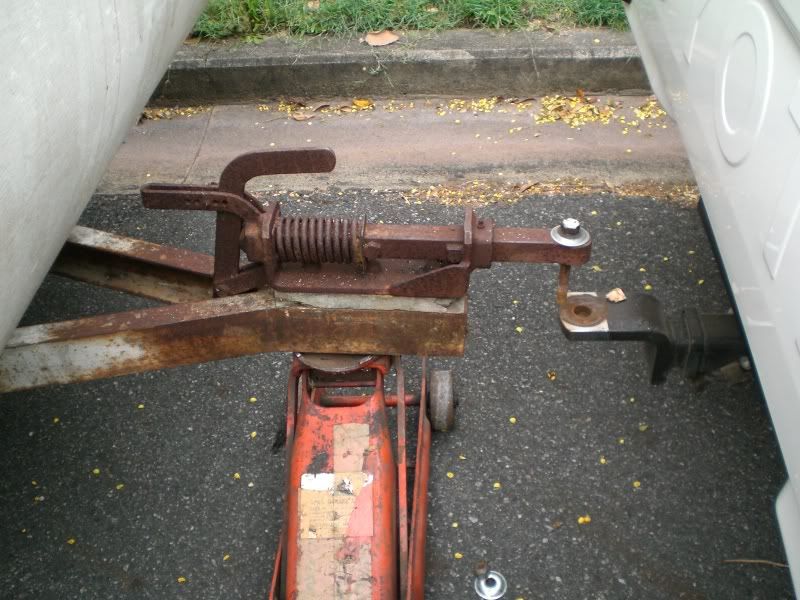 earlee. |
|
|
|
Post by minicamper on Apr 23, 2008 7:18:05 GMT 10
Hey Earlee, I think Homer said it best.... "DOH"  I should have researched before the grinder came out.. This is what Neil was referring to... 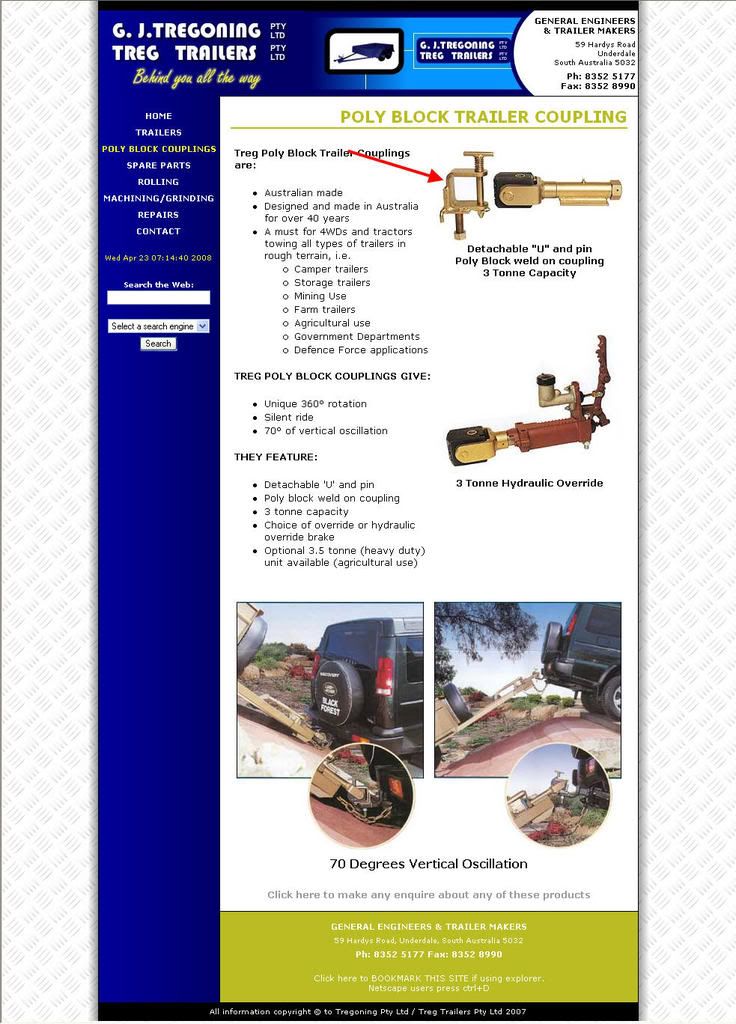 Cheers Chris |
|
|
|
Post by earlee on Apr 23, 2008 13:43:33 GMT 10
hi malabuh, excellent ;D ;D your pic shows the "missing link" for my coupling.  ;D this is your pic. are you going to use the coupling? 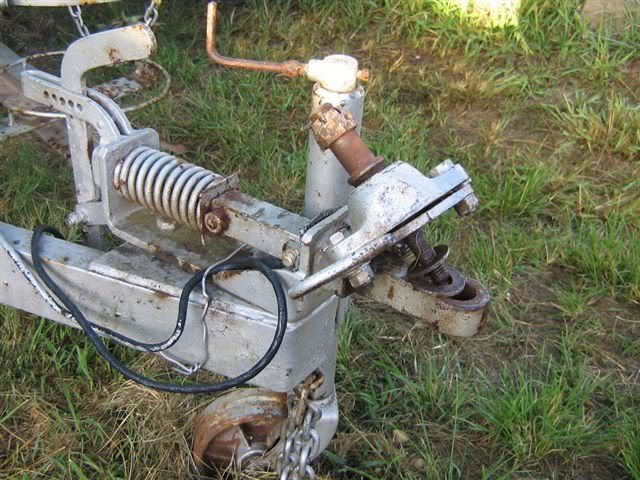 |
|
|
|
Post by malabuh on Apr 23, 2008 14:06:14 GMT 10
Hi earlee I am using the coupling but glad I can provide the 'missing link'. As discussed am happy to provide further detailed pics to assist in making up a new link. I think it would be best to use my link to have a new one made up, however, we live far apart and I need to use mine continuously to move a car in and out behind the van. With this type of coupling it jerks the tow car occassionaly when driving because it is spring loaded but u get used to it. As discussed the way I have placed it is deceiving the top rusty rod with the nut on top as pictured goes through the caravan tow bar hole from underneath the hole and the greasy threaded bit and the silver large chunky bit above the greasy threaded rod sits under the caravan tow hole bar and connects into the car tow - there are three bolts in a half circle under the chunky silver metal bit that surround the edges of the car tow bar snuggly while the threaded bit is bolted onto the car.
|
|
|
|
Post by cobber on Jun 8, 2008 19:17:25 GMT 10
The "Gem" coupling was advertised in a 1948 magazine. It was advised that the "little Gem" be used on trailers weighing up to 5cwt..... the "Super Gem was designed for trailers 5cwt to 30cwt. This is the complete article from the 1948 Caravan & Touring Manual. 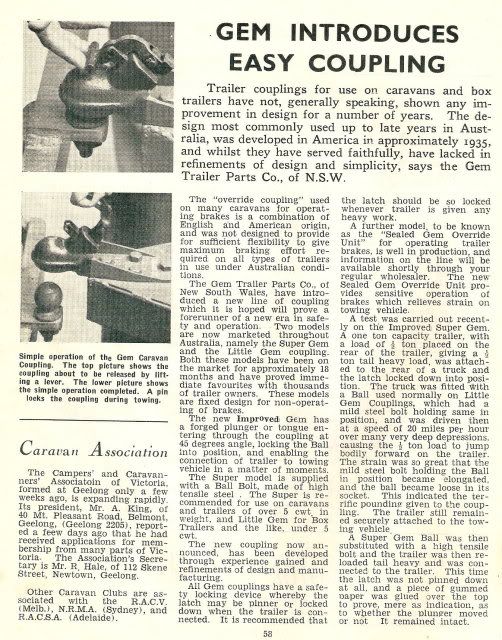 This is a better photo of the “Gem” coupling from a 1954 magazine, why it's branded "IMP" I know not  Notice it has a grease nipple on top now. 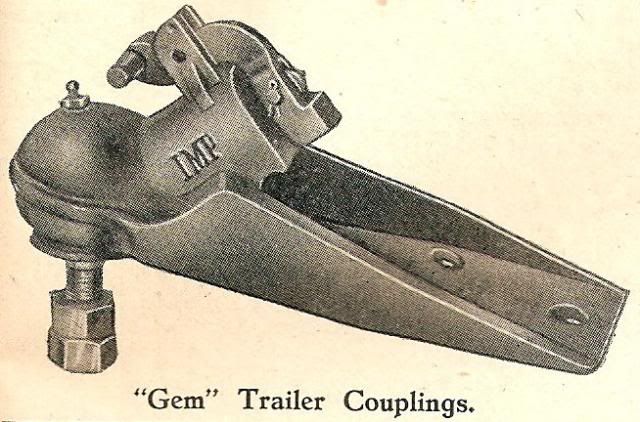 Cobber. |
|
elpea
Junior Member
  sandrover
sandrover
Posts: 87
|
Post by elpea on Sept 7, 2008 16:11:24 GMT 10
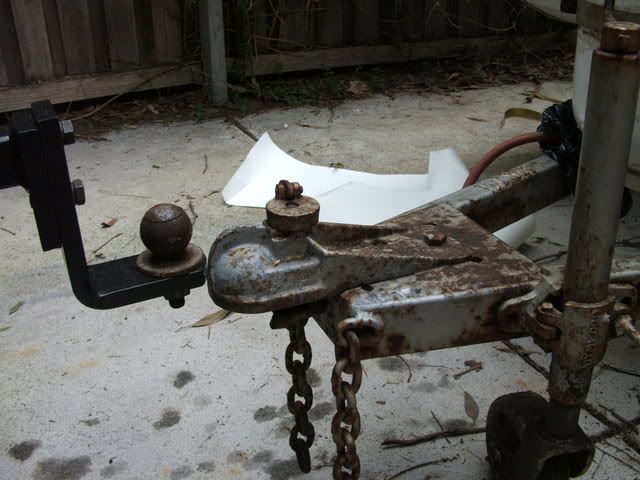 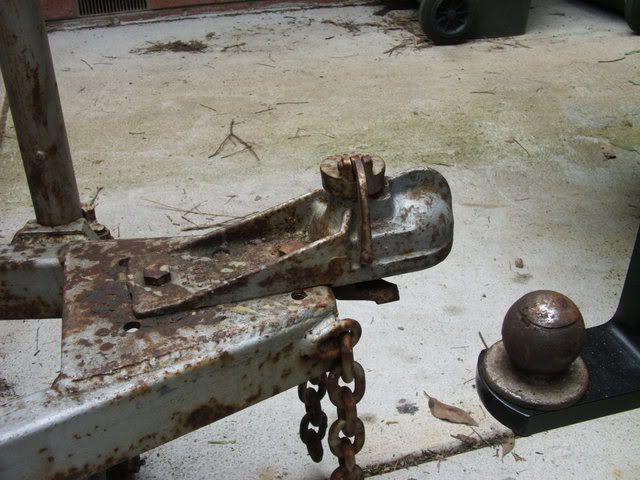 This is my coupling on my Sandrover. The age at this stage is estimated to be 1968. This coupling is being replaced with 50mm coupling as I don’t feel this coupling is safe. I think there must be some kind of locking device missing! If any body is interested in having it they are more than welcome, just send me a PM. It’s still on the van at the minute but will be taken off in the next 3 to 4 weeks. I would also be interested if anyone has any information on this coupling. |
|
|
|
Post by cobber on Sept 8, 2008 9:33:32 GMT 10
'day elpea, Your coupling looks safe to me, (but then I am prone to say things like that to maintain originality  ) That handle thing I take it is to make it easy to turn the round nut, then in the down position (as pictured) would prevent the nut un-winding. Is the handle held down with the help of a spring ? , that might be the only bit that could be missing. By the way...... what LP's do you collect, I got some I don't want. Cobber. A bit more information has turned up on elpea's coupling. It's called the "Dymwood" coupling and by 1961 it had the addition of a "safety chain"...... so maybe they did lose a couple of caravans with the original design   It was manufactured by Dymke & Wood, Newport, Victoria. 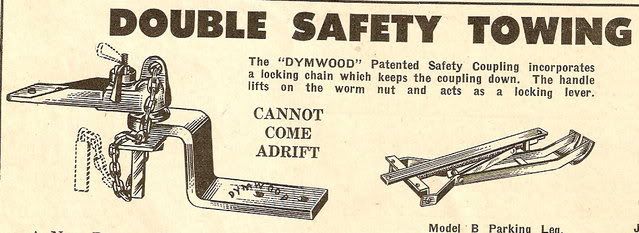 The Dymwood coupling on a 1958 Clipper caravan in this post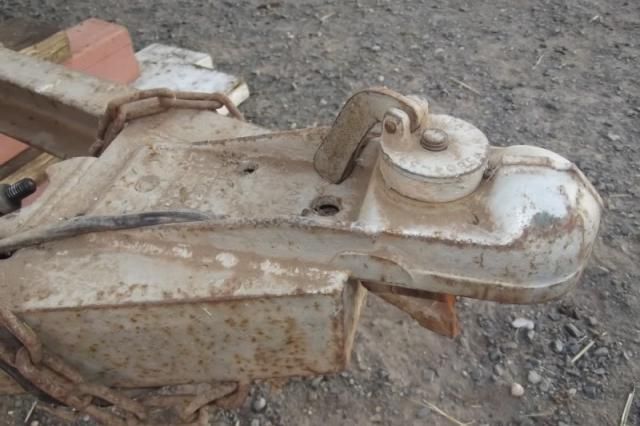 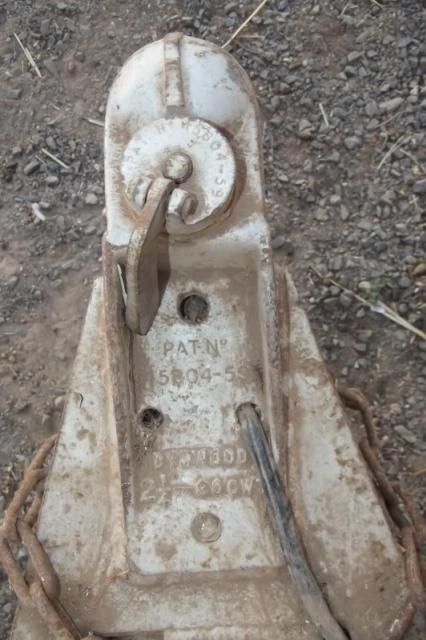 Cobber. |
|
|
|
Post by cobber on Sept 23, 2008 14:33:58 GMT 10
The “Locktite” coupling from a 1954 magazine.... very similar to one sometimes referred to as the “Newcastle safety hitch”, I think the difference might be that the "Newcastle safety Hitch" had a small bolt inserted in the side around about where the number 18 is on the illustration is below   .  This coupling is fitted to a 1961 “Newcastle” caravan 'built' by Mr. John Walsh (the caravan appears to be based on a “Carapark Cardman”) so this could be the “Newcastle safety hitch” based upon the “Loctite” coupling   .  Now....31 March 2009. Now....31 March 2009. I have been given a copy of the "Certificate of Registration of a Design" in the name of John Walsh. It has been asserted that John Walsh invented the coupling that was then registered under the name “Locktite”... but it appears that it was more generally known in the district around Newcastle as the “Newcastle Safety Hitch”. The external housing has been altered but the internal locking design is apparently the same. 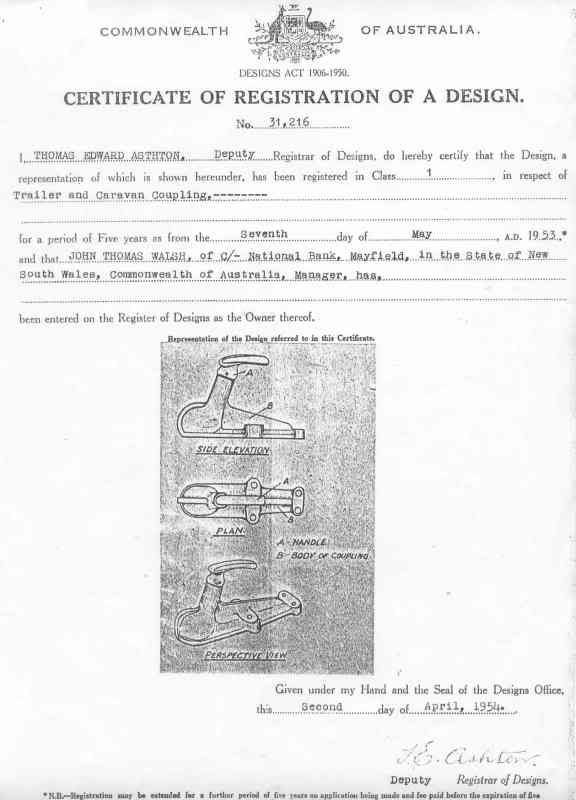 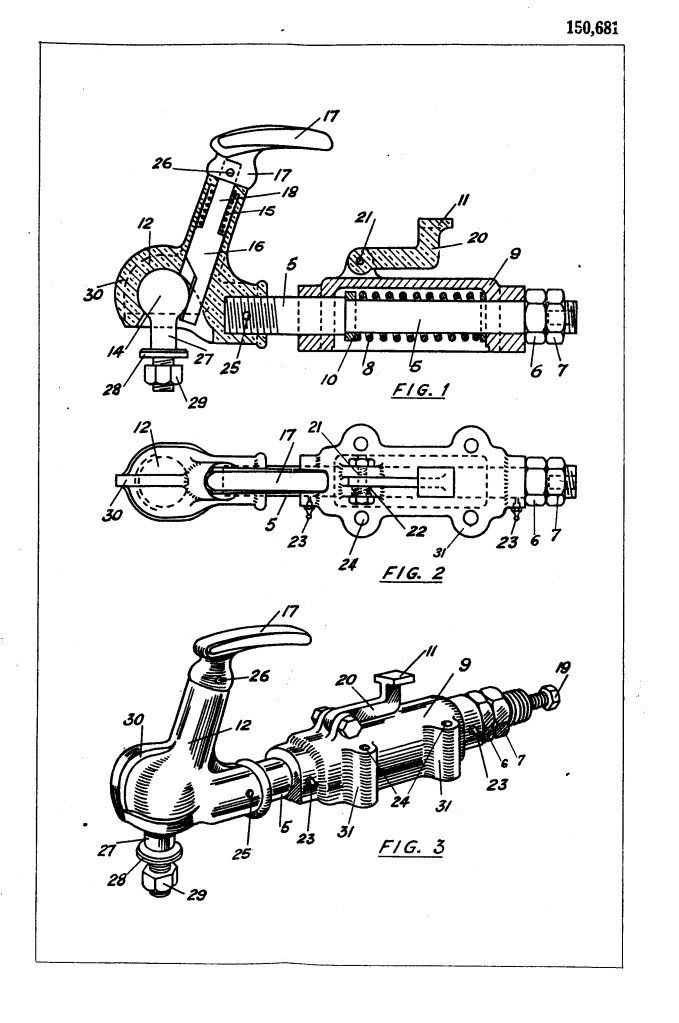 Cobber. |
|
|
|
Post by cobber on Sept 23, 2008 14:34:57 GMT 10
A few couplings from a 1951 – 52 magazine. 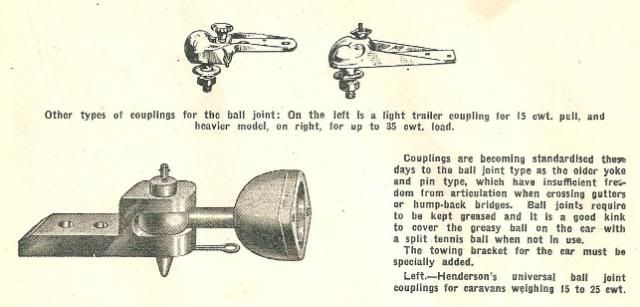 Cobber. |
|
|
|
Post by cobber on Oct 22, 2008 9:30:49 GMT 10
This is the “Globe” tow coupling used on a couple of “Rowvans” that have been sighted, it is fitted to 1 7/8 ball. Whether it was used on any other brand of caravan would be interesting to know. 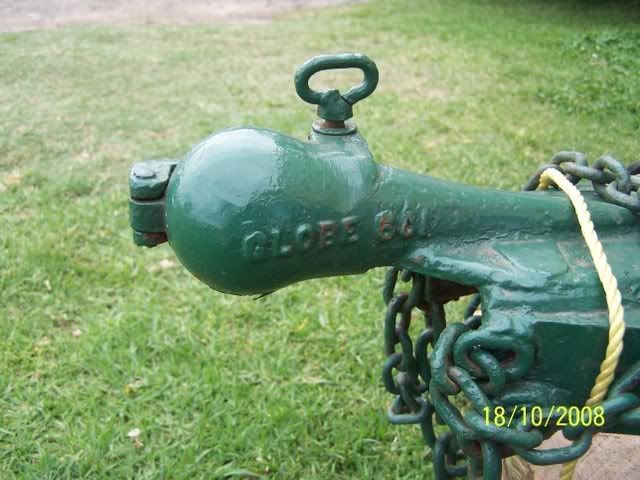 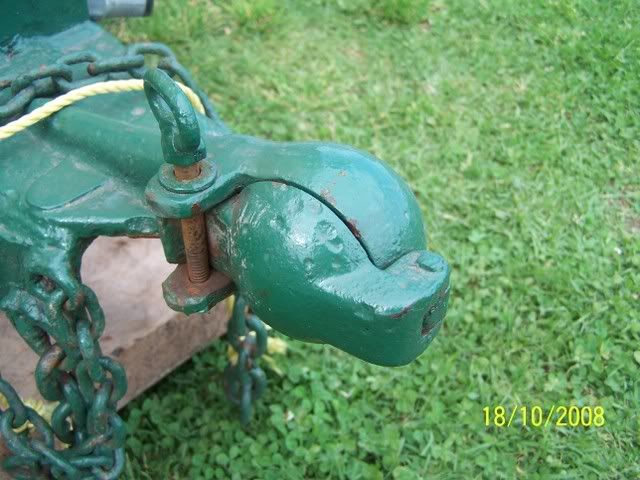 This new old stock Globe coupling was offered on ebay Sep. 2011 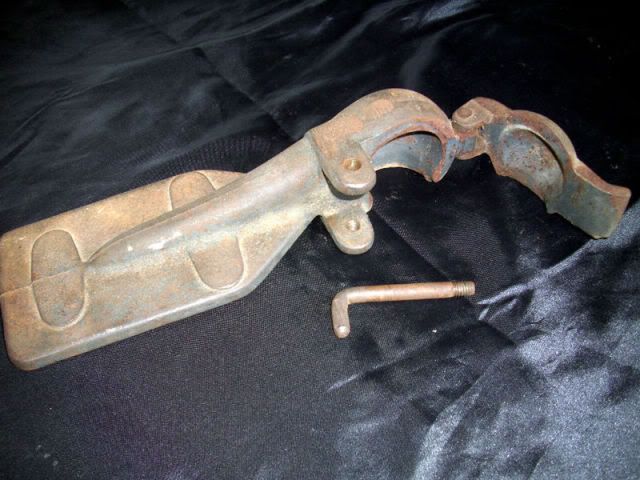 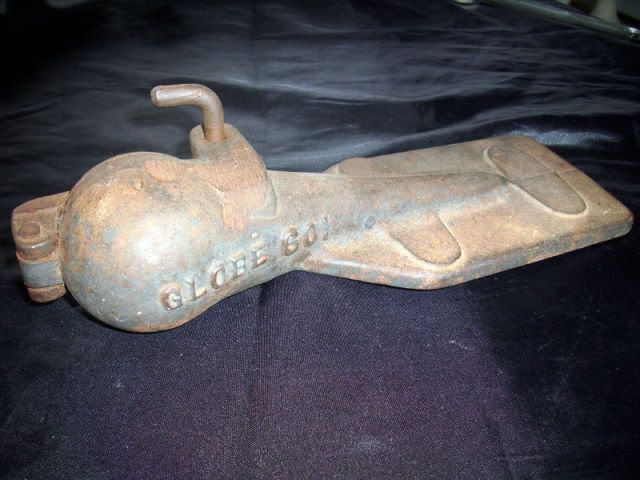 And here is another "Globe" coupling 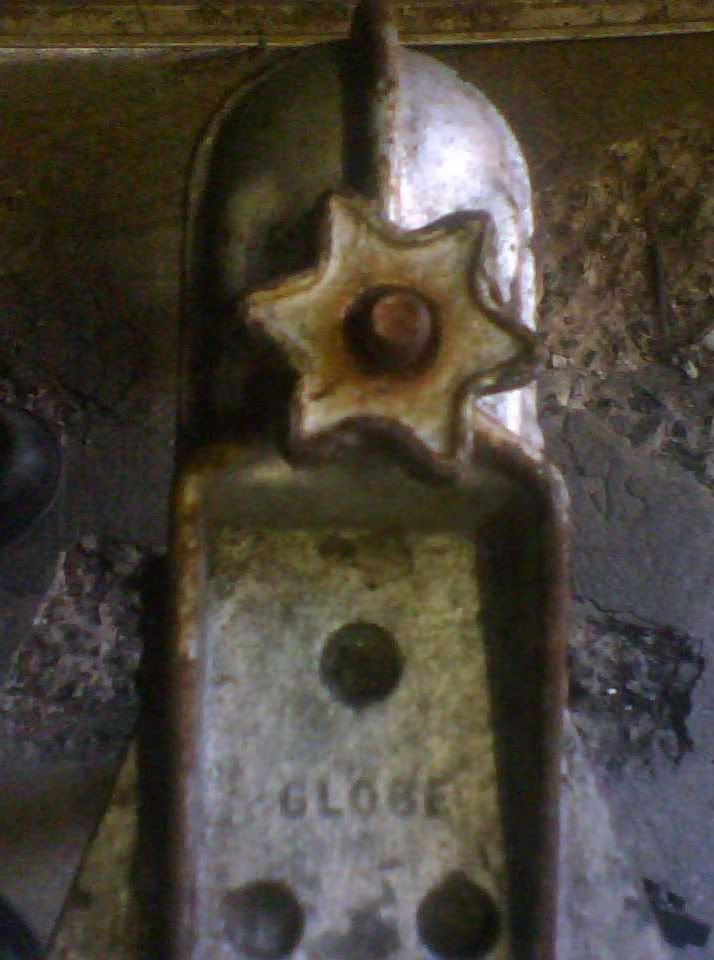 Cobber. |
|
|
|
Post by cobber on Oct 30, 2008 13:57:48 GMT 10
From the 1959 Caravan & Touring Manual. 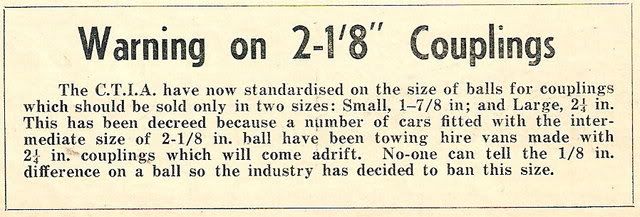 (50mm = 1.968 inches ) ( 1 7/8 in = 47.625 mm) ( 2 in. = 50.8 mm ) ( 2 1/4 in = 57.15 mm ) ( 2 1/8 in = 53.975 mm) Cobber. |
|
|
|
Post by cobber on Oct 30, 2008 16:58:44 GMT 10
Sold on ebay 30-10-08 for $30. Was described as --- “Antique 1920's jaws towbar rare collectable item length 31 cms... height 16cms. 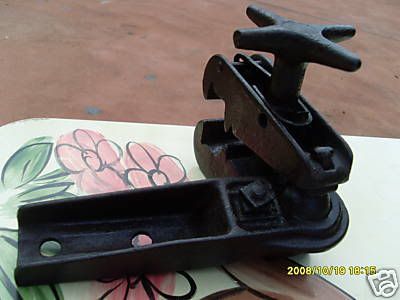 Cobber. |
|
|
|
Post by Jennison on Nov 1, 2008 17:36:25 GMT 10
Afternoon everyone
The pathfinder has one of those newcastle safety hitches with the small lockbolt bolt in the side. I will take a photo and post it. I have photographed my GEM coupling(or in this case "LITTLE GEM" coupling) as the photos will show. I have sent them to Donricardo for posting. regards to all.....
|
|
|
|
Post by Don Ricardo on Nov 2, 2008 21:32:56 GMT 10
Posted on behalf of Jennison as per post immediately above: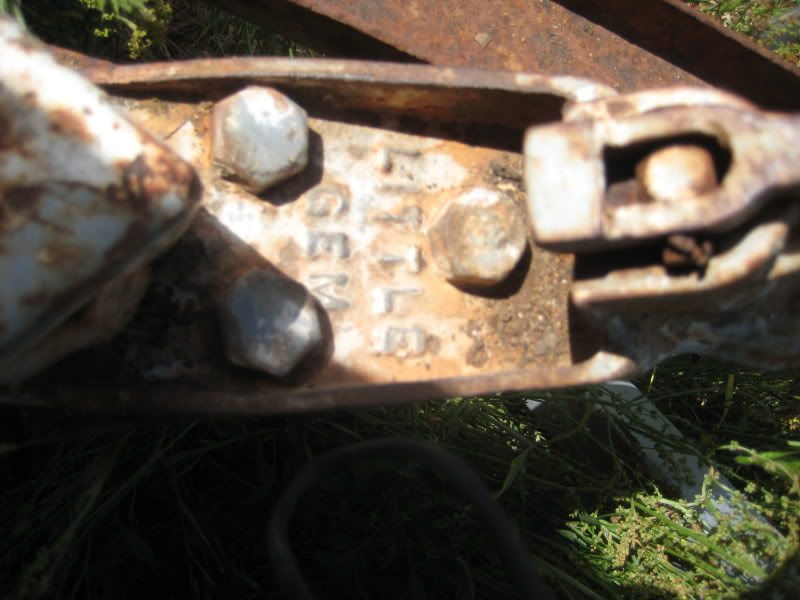 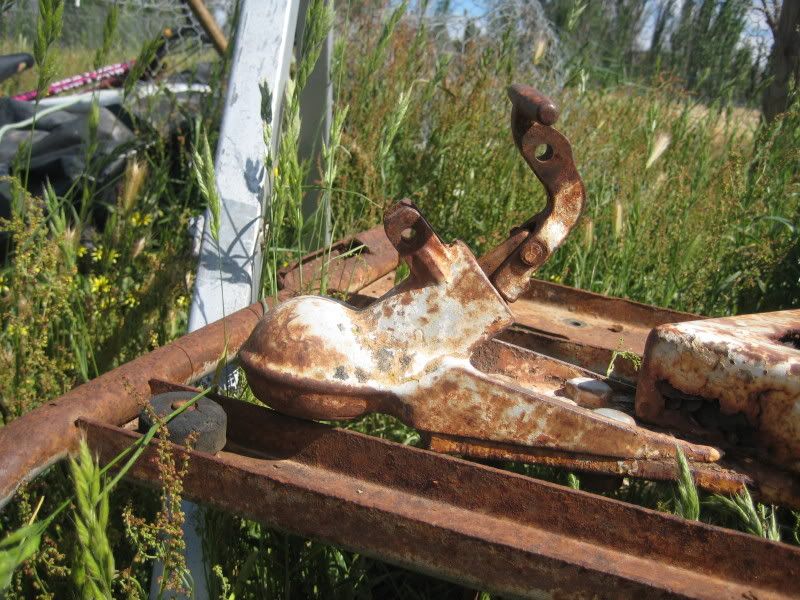 
|
|
|
|
Post by cobber on Nov 14, 2008 8:00:21 GMT 10
|
|